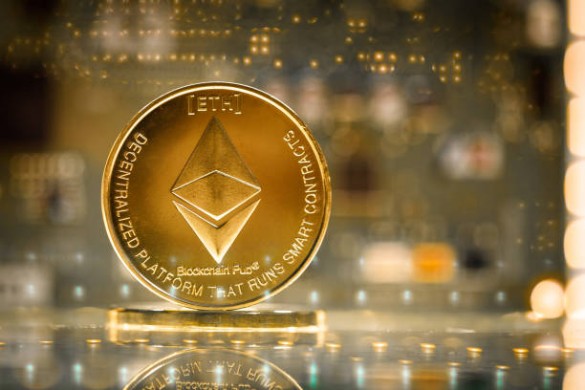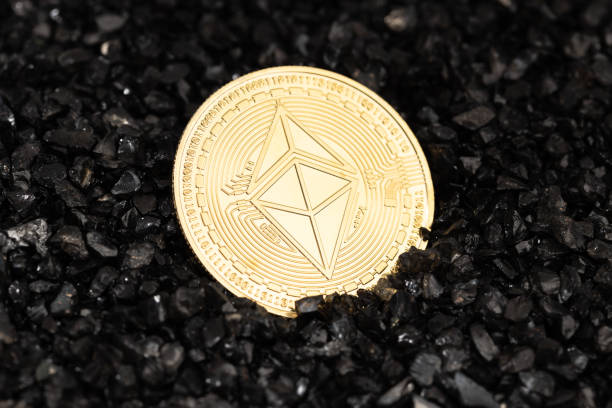A “Gwei” is a unit of measurement for the cryptocurrency Ethereum (ETH). It is the smallest denomination of Ether, which is the native cryptocurrency of the Ethereum blockchain. The term “Gwei” is short for “gigawei,” and it represents one billion (1,000,000,000) Gwei.

In the Ethereum network, Gwei is the smallest denomination, and Gwei is often used to express gas prices or transaction fees. Gas is the unit used to measure the computational work required to execute transactions or smart contracts on the Ethereum blockchain. When you send Ether or interact with smart contracts on the network, you pay a transaction fee measured in Gwei to compensate miners for processing your transaction.
Ethereum (ETH) introduces additional base units, each affectionately named after influential figures whose contributions have played a vital role in shaping the project’s development.
The Effect of Setting GWEI Too Low
- Transaction Delays: The most common consequence of setting Gwei too low is that your transaction may experience significant delays in confirmation. Miners prioritize transactions with higher gas prices because they want to maximize their earnings. Transactions with low Gwei values are often placed in the queue behind higher-paying transactions, so it can take much longer for them to be included in a block.
- Transaction Rejection: In some cases, especially during times of high network congestion, miners may ignore transactions with very low Gwei values altogether. This means your transaction might not get processed at all, and it could remain pending indefinitely.
- Smart Contract Failures: If you’re interacting with a smart contract and you set the gas price too low, the transaction might run out of gas before completing. This can result in a failed transaction, and any fees you paid for gas would still be consumed without achieving the intended outcome.
- Frustration and Inefficiency: Low Gwei settings can lead to frustration as you wait for your transactions to confirm. It can also be inefficient because you may need to resend the transaction at a higher gas price to get it processed in a reasonable time frame.
To avoid these issues, it’s essential to monitor the current gas prices on the Ethereum network and set your Gwei at a competitive level that corresponds to your transaction’s priority. You can use various online tools and wallets to check the recommended gas prices for timely transaction processing.

How Much Gwei Do I Need for Gas Fees?
The amount of Gwei (gas price) you need for gas fees on the Ethereum network can vary depending on network congestion and the urgency of your transaction. Gas prices are typically measured in Gwei per unit of gas, and the higher the Gwei value, the more you’re willing to pay for faster transaction processing.
Here are some general guidelines based on the current state of the Ethereum network:
- Standard Transactions: For non-urgent transactions like transferring Ether (ETH) from one wallet to another, a gas price of around 20 to 40 Gwei may be sufficient in normal network conditions. However, during periods of high congestion, you may need to increase this to 50 Gwei or more for timely confirmation.
- Smart Contract Interactions: Interacting with smart contracts usually requires a higher gas price because these transactions are more complex. A range of 60 to 100 Gwei or more is often used for such transactions, especially if you want them to be processed promptly.
- Urgent Transactions: If you need your transaction to be processed quickly, you may need to set a significantly higher gas price, potentially over 100 Gwei or even higher during peak congestion. DeFi activities, token swaps, and other high-demand activities often require higher gas prices for timely execution.
To determine the optimal gas price for your transaction, you can use Ethereum wallet interfaces or online tools that provide real-time gas price recommendations based on network conditions. Keep in mind that gas prices can change rapidly, so it’s essential to check before initiating any transaction, especially if timing is crucial.
Additionally, Ethereum’s transition to Ethereum 2.0, which aims to improve scalability and reduce gas fees, may impact gas price dynamics in the future. Stay informed about updates to the Ethereum network to make informed decisions about gas fees.
Gwei vs. Sat
- Gwei (Gigawei):
- Gwei is a unit of measurement used in the Ethereum blockchain.
- It represents one billion Wei, which is the smallest denomination of Ether (ETH), Ethereum’s native cryptocurrency.
- Gwei is commonly used to measure gas prices in Ethereum transactions. Gas is the unit used to quantify computational work and transaction fees on the Ethereum network.
- Sats (Satoshis):
- Sats is a unit of measurement used in the Bitcoin blockchain.
- It is short for “Satoshis,” which are named after Satoshi Nakamoto, the pseudonymous creator of Bitcoin.
- Sats represent the smallest denomination of Bitcoin. There are 100 million Satoshis (Sats) in one Bitcoin (BTC).
- Sats are often used to express fractional amounts of Bitcoin and to measure transaction fees.
In summary, Gwei is specific to Ethereum and represents a fraction of Ether, while Sats are specific to Bitcoin and represent a fraction of Bitcoin. Both units are used to measure transaction fees and smaller denominations of their respective cryptocurrencies.
Learn from market wizards: Books to take your trading to the next level

 Hot Features
Hot Features












